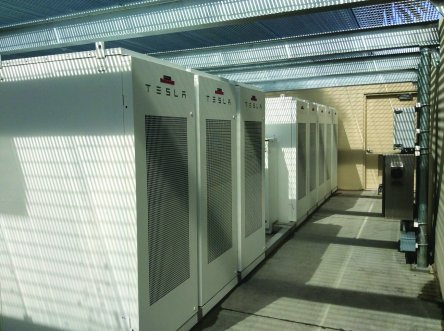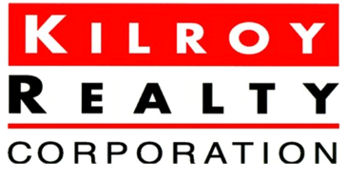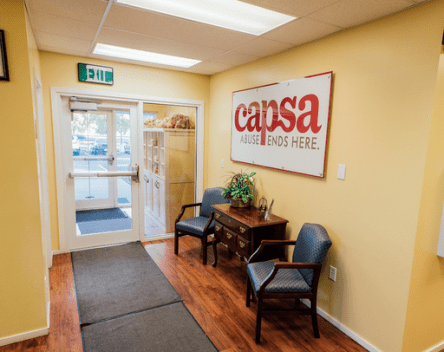Established in 2016, Oak City Soccer provides active, hands-on programming to help children with autism, ADHD, sensory processing disorder, and anxiety. Through activities, particularly soccer, youth improve motor functions, establish social skills, and experience fun and acceptance in a team setting. The program has changed the lives of hundreds of children living in Cary and Wake Forest, North Carolina. Yardi Raleigh recently formed a relationship with Oak City Soccer that has been inspiring and uplifting Answering the Call The relationship began during the Yardi Cares Committee’s annual request for grant nominations. Each year, Yardi offices around the world receive a sum of funds to allocate the local non-profit organizations. “When the Yardi Cares Committee asked for suggestions for organizations to support, I immediately thought of Oak City Soccer,” says Thomas Duncan, Technical Account Manager, Residential NC – Consulting Practice 2 at Yardi. “They are also local to our Yardi Raleigh office and I really wanted to help out some local charities in addition to larger, state-wide charities.” After reviewing the nomination and researching the organization, the committee casted its votes. Oak City Soccer joined the league of grant recipients for the year! Yardi’s donation supported the expansion of Oak City Soccer to a second location, expanding from Cary to Wake Forest. Additionally, the funds provided scholarships to low-income families, as well as the replacement of worn out supplies such as soccer balls, new therapeutic tools, and visual cues. Roxy Shelley, Executive Director of Oak City Soccer, received the donation on behalf of Oak City Soccer. “Thanks so much to Thomas for the nomination, and Yardi for the amazing support this past year. We are truly grateful!” More than a Game Shelley has witnessed the way that the Oak City Soccer impacts kids on a...
CA’s New Solar Panel Law ...
Savings + Risks
Not long ago, California became the first state to require that all new homes have solar power: single-family and multifamily properties alike. The rule is part of the state’s commitment to cut greenhouse gases. It will go into effect in the next two years. Under the new law, developers must either equip individual homes with solar panels or build a shared solar-power system serving a group of homes. The rooftop panels can either be owned or made available for lease on a monthly basis. But are they covered by an insurance policy? Insuring the Vision Here’s what the folks at the Insurance Information Institute have put together: Most solar panels are considered a permanent attachment (like a deck) and thus are protected by a homeowner’s policy. However, check with your insurance company to know for sure. Another thing to consider is the coverage amount—your insurance policy’s coverage limit is the maximum amount that will be paid toward covering a loss. Ensure you have the adequate coverage limit, because despite the significant contraction in the cost of solar panels, it’s still not negligible. Your premiums will suffer. Some carriers allow solar energy systems owners to purchase an optional endorsement just for the panels. Others include the coverage in the dwelling coverage (coverage A) if the panels are on the roof of the home or under coverage B if the panels are on the ground or on the roof of a detached structure. Leasing the solar panels can make a big difference in your policy: if you install a system with a lease or power purchase agreement (PPA), you are not the owner of the system. In this case, the company with whom you have the agreement owns the panels and is responsible for their maintenance....
Senior Citizens’ Day...
A time for reflection
With new holidays and observances cropping up all the time, can be hard to keep track. But there’s one upcoming celebration not to be missed: Senior Citizens’ Day, marked each year on August 21. While thinking of ways to honor the special seniors in your life, let’s recall the origin of this important observance. It began with a proclamation by Ronald Reagan on August 19, 1988. Our former President lauded the achievements of our nation’s elders, thanked them for their leadership, and highlighted the ways in which older people, living longer and fuller lives than ever, continue to make their presence felt for their own good, and that of others. As we consider all the seniors we know and what they’ve contributed to our lives and to our society, it’s important to think about what we can give back. The Senior Citizens’ Day proclamation addressed this too: We can best demonstrate our gratitude and esteem by making sure that our communities are good places in which to mature and grow older— places in which older people can participate to the fullest and can find the encouragement, acceptance, assistance and services they need to continue to lead lives of independence and dignity. The words proclaimed decades ago still hold true. The most important way we can repay those who came before us is to ensure they’re well taken care of in the communities in which they now reside. How much progress have we made in the thirty years that have passed since these words were penned? While we still have opportunities to better the senior living industry, today’s seniors have more choices for quality care than ever before. From luxury independent living to high-tech, patient-focused care regimens, residents are no longer resigned to just a...
Energy Storage
Promising New Technologies
Though energy storage is a relatively new addition to the property operations toolkit, it offers vast potential. Battery systems have demonstrated multiple ways to enhance sustainability, cut costs and supply reliability. A key tactic is load shifting, the process of obtaining power during off-peak hours and storing it for use during costlier peak hours, noted Elliotte Quinn, an energy and construction attorney with Charleston, S.C.-based law firm Parker Poe. Batteries offer an alternative backup strategy to diesel generators, and can store solar power for use at night or on overcast days, Quinn noted. Earlier this year, The Irvine Co. launched a multi-property storage strategy at 21 office towers in Orange County, Calif. When requested by local utility Southern California Edison, the buildings switch their power source from the grid to a storage system that’s powered by Tesla batteries (pictured above). The office portfolio becomes a “virtual power plant that can be used to take the load off the grid instantaneously,” explained Susan Kennedy, CEO of San Francisco-based Advanced Microgrid Solutions, the system’s designer and manager. Shifting to battery power reduces the load by 10 megawatts for as long as four hours to help SCE balance the grid. Wholesale Changes An order issued this year by the Federal Energy Regulatory Commission should make it easier for property owners to sell energy into the wholesale market, but there is a hitch. “If you do that, you’re making yourself subject to federal regulation,” said Quinn. Wholesale selling is likely to be the purview of larger owners, he predicted. As is generally the case with newer technology, battery storage remains a work in progress. By most estimates, costs are dropping, yet the difficulty of predicting payback periods presents a challenge for owners that need to make a multimillion-dollar...
CRE Leans Green
Ways to Reduce Grid Strain
In July, parts of the U.S. saw record demand for electricity, driven by higher temperatures pushing up power usage. Pennsylvania-based regional transmission organization PJM Interconnection LLC reported 144,557 megawatts of demand on July 3, the highest level in almost two years. Power usage in New York City reached its highest level since 2013 the previous day, July 2. On the other coast, more than 80,000 Southern California residents lost power on the July 7-8 weekend as a heat wave caused problems with distribution system equipment. Meanwhile, ERCOT, the grid operator for most of Texas, expects to set a new peak demand record this summer. Resource capacity should allow the grid to operate reliably, but unexpected outages to major generators could prompt demand-side management measures, including potential emergency load shedding. Strain on the grid has obvious implications for property managers, since the residential and commercial sectors account for about 39% of total U.S. energy consumption and more than two-thirds of the electricity used nationwide. Summer heat and havoc it wreaks on the power grid is one reason many property owners seek to incorporate energy efficiency as a core business tenet. One resource in that effort is the Green Lease Leaders program, which encourages lease terms that give both landlords and tenants a stake in adopting building efficiency practices and investments. The Institute for Market Transformation, which administers the Green Lease Leaders program with the U.S. Energy Department’s Better Buildings Alliance, estimates that green leasing could help reduce utility bills by up to $0.51 per square foot (22%) in U.S. office buildings alone; if all leased office buildings executed green leases, the market could achieve over $3 billion in annual energy costs savings. In June, IMT and Better Buildings Alliance recognized companies that incorporated innovative energy...
Alexa and the Elderly...
Amazon Takes on Senior Living
When conversation shifts to home automation, references to Millennials are rarely far behind. While it’s true that the emerging generation of homeowners loves their tech toys, they aren’t the only ones harnessing the power of smart home technology. Senior living providers have joined other industry leaders in the pursuit of more automated options for residents as well. Amazon + Senior Housing Amazon has made huge strides as a provider of integrated automation and voice control for major home builders across the industry, including prominent developers Lennar and Shea Homes. Communities created by these companies are part of a growing “Wi-Fi Certified” trend, offering housing with built-in automation and voice control. For seniors, that means controlling features within their homes and interacting with the outside world is simplified, thanks to voice commands. Enabling the integration is Amazon’s Alexa, a cloud-based virtual assistant, which appears in various forms throughout the homes. She’s most often takes shape as a sleek, tabletop pillar in the Echo line of products. Through Alexa, seniors can set reminders for appointments and medications; control music and home ambiance; check weather; get news and sports updates; and order just about anything fathomable on Amazon.com. Amazon Echo Dot speakers permit seniors to access Alexa anywhere in their home. They also serve as Bluetooth speakers that are capable of connecting to a myriad of seniors’ personal devices. With so many ways to integrate, Amazon’s variations on Wi-Fi centric homes are quickly becoming the new standard for incoming baby boomers, but the tech toys come with a few caveats. Too Smart for Its Own Good? As technology develops at a rapid pace, home builders are left wondering just how quickly their newly installed gadgets will become obsolete. Alternatively, what are the costs associated with staying up-to-date...
Samsung Unpacked
2018 Product Updates
Samsung’s annual product conference gathered a big crowd in Brooklyn last week. The main focus was on productivity and performance upgrades across Samsung’s entire collection of devices. The most anticipated gadget was the company’s phablet, Galaxy Note 9. On the exterior, not much has changed, but under the hood some upgrades took place, including a bigger battery, an even bigger screen (6.4-inch) and a more potent S Pen. Additionally, Samsung’s DeX software is now built into the phone, which means that the phone now can be plugged into any external display for a desktop-like experience. Available in two configurations—a 128GB/6GB RAM model for $999, and a 512GB/8GB RAM for $1,250, the phone will start shipping later this month. Design wise, the rear fingerprint sensor was relocated below the camera, but everything else is still in its place: water resistance is still a feature, as is fast wireless charging, expandable microSD storage, the Bixby button and the mighty headphone jack. What’s most baffling about this device is the storage capacity—add a 512GB microSD card into a 512GB Note 9 and you’ll have 1TB of storage and that is pretty insane. Galaxy Note 9 will run on Android 8.1 Oreo without any changes from the user experience on previous phone versions. The battery, a hot topic in Samsung’s world, has been increased to 4,000mAh, the largest so far in a Note. To keep their customers’ cool related to battery safety, Samsung has validated and certified its new batch of batteries through outside companies as well as in house. The heart of the Note 9 is a Qualcomm Snapdragon 845 processor with new optimization to the GPU. A pretty cool feature we still don’t know too much about is the Water Carbon Cooling system, but it sounds...
Nutrition + Wellness
Benefits for Seniors
When it comes to the discussion of seniors’ mental wellness, we are often directed to the latest medicines and advances in technology. To help many seniors prevent and mitigate illness, we need to look no farther than their plates. Mental Wellness Starts from Within Psychologist Sonja Lyubomirsky led a team of researchers on a quest to understand just how much of our happiness lies within our control. Based on their research, the team proposed the 50-10-40 formula: “approximately 50 percent of variance in happiness is determined by genes, and 10% of variance in happiness is determined by circumstances.” That leaves the remaining 40 percent of our happiness to be determined by our actions. We may immediately think of how we handle stressors as a factor of joy, but one of our most important actions is how we nourish our bodies. Feel-good hormones, such as serotonin and dopamine, are produced in the gut. When we consume inflammatory foods—which for many include dairy, sugars, processed grain, and alcohol–we interrupt the natural balance of the gut. The probiotics, or good bacteria and yeasts, cannot operate optimally. Bad bacteria, yeasts, and parasites thrive, adversely affecting the production of feel-good hormones. The results can cause or aggravate several ailments that affect seniors including fatigue, anxiety, and depression, as well as digestive issues, respiratory problems, several autoimmune disorders, arthritis, and more. In addition to a hormone imbalance, poor nutrition can weaken our immune system. The gastrointestinal (GI) tract is responsible for antibody production. When the GI tract experiences inflammation and imbalance, protective antibodies are not produced adequately. We are more susceptible to infection and illness. When we are sick, our social interactions suffer as well as our ability to exercise and maintain high spirits. Food: Tried and True Medicine When...
Rob Podlesnik
Yardi Canada Spotlight
Yardi Canada celebrates 20 years with a spotlight on leaders who have helped the company grow. Today, we introduce Rob Podlesnik, director of Global Solutions and PSG for Yardi Canada. Podlesnik has been integral to the development of Yardi Canada—and it all started over a cardboard box. Humble Beginnings Podlesnik, a York University graduate, began his career in property management. He joined Yardi Canada in 1998. At that time, Yardi Canada consisted of eight people in a brand new office space with absolutely no furniture. “When I went in for the interview, it was literally an empty office with a cardboard box for a desk,” recalls Podlesnik with a laugh. “They positioned it well, like ‘Yardi Canada is expanding. This is going to be the first office.’ I decided to give it a year. It sounded very entrepreneurial and the atmosphere was completely foreign to me but I loved the startup culture.” He contributed to that culture, helping to form a tight-knit group that operated as a family. Everyone wore multiple hats, helped one another, and maintained close relationships. They worked together to fulfill a grand vision, one where Yardi led the Canadian property management software industry. Podlesnik began as an implementation specialist, where he worked on training and consulting, which suited him since he once considered becoming a teacher. The opportunity to visit clients, share his knowledge, and learn ways to improve the products through client feedback excited Podlesnik. But it wasn’t always easy. As a young road warrior, Podlesnik found it difficult to maintain personal relationships but his passion for the work he did and the growth kept him going. He soon assumed a role on the client services team, which allowed him to put down roots personally and professionally. He was...
Making Life Easier
RentCafe Senior Living
It’s 6:30pm. Your senior resident’s daughter has made it through traffic just in time to pick up her son from band practice. Now she’s got to rush to the pharmacy to pick up your resident’s refill and make it to the community in time for her father’s evening application. But before she does that, she has to visit your leasing office to pay the rent and remind the agent about the leak in the bathroom–all before the office closes at 7pm. While she is driving, exhausted and stressed, she gets a call from her friend. Her friend’s mother is in a comparable senior living community that offers rent payments, maintenance requests, and an ability to communicate with clinicians through an easy-to-use online portal. That portal can be accessed on any mobile device. Your resident’s daughter is suddenly having second thoughts about your property—and rightly so! Our busy lives benefit from the modern conveniences of digital and mobile services. Senior care is no different. The RentCafe Senior Living portal helps users achieve greater work-life balance through improved daily efficiencies and conveniences. For Families RentCafe Senior Living offers time savings and ease-of-use for family members. Users can manage payments, make maintenance service requests. and even track progress on maintenance orders. They will know when the issue is resolved and their loved one is living comfortably again without making a dozen calls to your office. RentCafe Senior Living connects seamlessly with CRM, EHR and mobile tools. Families can effortlessly request updates from the community regarding prescription refills, review health information and communicate with care providers on their loved one’s progress. With these tools, site visits are for time with loved ones, not resolving issues and running errands. Through the online portal, family members can even check out...
Building Futures
Women’s Economic Ventures
Women’s Economic Ventures (WEV) offers microenterprise development services to female entrepreneurs in California’s Central Coast. Trainees receive self-employment training through a proprietary curriculum and loans that enrich the diversity of businesses and opportunities in the area. WEV has helped more than 6,500 clients jump start 4,000 businesses. More than $4 million in loans have supported the dreams of borrowers who do not qualify for conventional products. These combined forces have created about 8,000 local jobs. In addition to WEV’s work in the Santa Barbara area, the organization has extended some of its services to women in Texas, Hungary, Nepal, Amman, and Jordan. While great strides have been made since the inception of WEV in 1991, there is still a lot of work to be done to reach economic parity. WEV’s Business Recovery Specialist Nicki Pharr explains, “Women currently own about 38 percent of all businesses, but they generate only 25 percent of the annual revenues as their male counterparts. 71 percent of woman-owned businesses generate less than $25,000 in annual receipts and only 1.8 percent reach a million dollars in annual sales.” Research suggests that confidence and access to capital are two of the main reasons why women fall behind. Pharr says, “Women start businesses with roughly half the capital as men. A growing body of research indicates that confidence is as important as competence as a determinant of success and women exhibit much less confidence than men. We need to close the confidence gap so women don’t opt out of competitive but lucrative opportunities to start scalable businesses in male-dominated fields, and we need to continue to help women acquire the business acumen and skills they need to grow bigger businesses.” WEV in Action Pharr has known that she wanted to connect with WEV ever since...
Pay Vendors Faster
See How VendorCafe Works
A vendor provides a product or service for a property management company. Then they get paid, the sooner the better. That’s the theory, at least. In practice the traditional process can be laborious for both sides of the ledger—vendors and property managers. Submitting paper invoices, securing approvals, cutting checks, stuffing and mailing envelopes, and taking payments to the bank breed opportunities for errors and delay. Yardi’s online vendor management solution, VENDORCafé®, speeds up the invoicing process for vendors while reducing printing, mailing and storage costs for property managers. “We’ve noticed a significant improvement in expediting our invoices through the system. It’s user friendly, and provides an easy transition from one task to the next. Thanks VENDORCafé!” says Shamrock Press and Graphics. Yardi has taken the lead in developing new technology for vendors that makes processing invoices and payments, uploading insurance certificates and accessing statements, much easier. VENDORCafé offers: Easy, secure, mobile-enabled uploading of invoices and statements Reduced costs through electronic invoice processing Automated transmission of compliance status, expiration alerts and other information This infographic takes a look at the step-by-step VENDORCafé process. For property managers, VENDORCafé is a single vendor management system of record that cuts risk in vendor onboarding, eliminates lost and duplicate invoices and integrates fully with their Yardi Voyager® property management and accounting platform. “VENDORCafé eliminated the frustration that our vendors and internal staff previously experienced. Before, vendors would reach out to our staff to get updates on invoices. Now that vendors can follow their invoice online through the payment process, we have seen a visible increase in efficiency,” says Iris Esguerra, Yardi project manager and information technology business analyst for Grubb Properties, a developer in Charlotte, N.C. with commercial and residential holdings. She adds, “VENDORCafé gives our vendors confidence and...
ADA in Multifamily
Cost of Non-Compliance
I’ve been a proud Atlanta resident for 24 years. While much of that time was spent in the car-dependent suburbs, recent years have offered the opportunity to explore the bustling city as a pedestrian. It was during a trip to Piedmont Park (the largest park within Atlanta city limits) that I noticed a problem that has plagued city dwellers for decades: precarious pavement. Cracked concrete slabs jut several inches into the air, forced upward by the roots of established trees and erosion. Those raised surfaces were accompanied by deep potholes and portions of missing concrete. It was an unpleasant ride on my mountain bike. I could only imagine what it must be like on foot or in a wheelchair. Others have had similar thoughts. On June 11, three wheelchair users filed a class action lawsuit against the city of Atlanta. The suit asserts that the city’s walkway infrastructure does not uphold the Americans with Disabilities Act (ADA) statutes. The hazardous walkways make navigating pedestrian thoroughfares dangerous. In many areas, pedestrians must enter the street and contend with automobile traffic just to get around. A win seems promising for the wheelchair users. Several major cities have emerged from similar lawsuits by paying billions for repairs. Los Angeles, for example, settled a suit in 2015 for $1.3 billion in repairs over the span of 30 years. Avoid Lawsuits. Be Proactive About ADA Compliance. If major cities are not exempt from ADA noncompliance lawsuits, neither are you. Residents are demanding their rights at multifamily properties, too. In 2012, The Department of Justice announced one of the largest settlements to date: the owner of 32 properties had to pay $10,250,000 into an accessibility fund to correct noncompliance issues. The owners also paid a $250,000 civic penalty. Correcting the...
Leadership Spotlight
Yardi Canada
Peter Altobelli is the Vice President of Sales and General Manager at Yardi Canada Ltd., a passionate mentor for many employees, as well as a husband and father. Arriving at this point in his career has entailed 30 years of dedication, innovation and focus on the company’s clients. He began his career in the 1980s with a background in software development in the healthcare sector. “You all have it so easy these days,” chuckles Altobelli. “Back then everything was in DOS. Shortcut keys were a major breakthrough for users. These days, people don’t think that that could even be a feature worth mentioning given that everything is done with a mouse, even intuitive touch screen or by voice activation.” In the 1990s, Altobelli became an entrepreneur, developing software products for the home building, property management and real estate brokerage industries. Through software design, development, sales and implementation, the company created a strong presence in the market and was instrumental in promoting technology to support new ways of doing business. It was during this period that Yardi began collaborating with Altobelli and his company to establish a footprint in Canada. By 2000, Altobelli became an integral part of the staff at Yardi. His thorough understanding of the Canadian market and industry standards have been crucial elements for the growth of Yardi Canada as it offers comprehensive support, implementation, sales and marketing for real estate businesses. Innovation + Growth with Yardi Altobelli was responsible for establishing the first Yardi office in Canada and has grown Yardi’s market penetration to be the leading software supplier in the country. “I was excited to work with Yardi because it’s such an innovative company,” says Altobelli. “I also appreciate that the culture is very inclusive. There is diversity of experience...
Leveraging Energy Data
Kilroy Realty Corporation
Kilroy Realty Corporation (NYSE: KRC) continues to normalize green leasing in-house and across the industry. The Los Angeles-based company builds each of its properties to a minimum of LEED Gold Certification and has won numerous awards for sustainability across its existing 13.9 million square foot portfolio. Sara Neff, MBA, LEED AP, Senior Vice President of Sustainability at KRC, is one of the thought leaders behind the innovative sustainability programs at KRC and in the commercial real estate industry. She’s been a driving force creating and deploying the BOMA W2 Challenge, a new initiative built with the support of a generous grant from Yardi, and in partnership with the BOMA Local Associations, that can lead to cost savings on water and waste for countless organizations. Neff spoke on the W2 Challenge and its benefits during a BOMA International webinar this summer with panelists from Yardi and LaSalle. The session “Reducing Water and Waste Starts with Data” explored how KRC and LaSalle have optimized the efficiency of their assets with the use of utility data analytics. The W2 program gives organizations the basic tools needed to do the same. Benefits of Benchmarking Benchmarking has helped KRC surge ahead of industry norms in several ways. Utility benchmarking is becoming more popular: state, regional, and local regulations are starting to require it, tenants are looking for more efficient buildings to lease, and investors are seeing the value and profitability. Reducing water, waste, electricity, carbon footprints, greenhouse gasses, and emissions is becoming more than environmental – it’s now political. And policies from city governments, like the NYC Mayor’s Carbon Challenge, and state legislators, like California’s Assembly Bill 802, are becoming more common across the U.S. and mean serious business. Noncompliant owners and buildings are fined or placed on a publicized list. By adopting resource tracking measures early on, the organization and its legal team are better prepared to comply to benchmarking requirements. Lenders also look at ENERGY STAR scores as a measure of how well a building is being operated, so even businesses in locations that do not require benchmarking benefit from doing so. Neff encourages companies to get started with benchmarking as soon as possible. “Investors are looking for data coverage and benchmarking. It’s better to at least have the data gathered and organized even if you can’t show mind-blowing results in the first years,” she says. Organizations can gain access to greater capital for growth by demonstrating that buildings are operated efficiently. Benchmarking can even effect occupancy rates and leasing rates. In LA, Neff explains, class B buildings with ENERGY STAR certifications lease at higher rates than class A buildings without certification. Certified buildings also experience higher occupancy rates. Energy benchmarking has become a critical component of growth because it can also lower overhead costs. Neff recalls how an exterior leak could have cost the company thousands. Neff says, “Benchmarking is how we found exterior leaks. We have really good detection systems in the interiors of our buildings. But boy, if you have a leak in the exterior, a drip irrigation line that’s buried, good luck figuring out that is happening! The only way to do that currently is through water benchmarking.” She continues, “We had a building that had a 25 percent increase in water that quarter compared to the previous year. It’s something that could’ve gone on for months and months. It’s not just the cost. It’s the damage to the area: the integrity of the foundation, the soil, the plants, and nobody knew.” KRC noticed a change in waste diversion at a different property. “One building dropped precipitously in its diversion but it was the same number of pickups,” Neff begins. “Nothing changed about the service schedule and we couldn’t figure out why the data was changing.” It turns out that the recycling was contaminated….with spaghetti. “A tenant would have regular spaghetti parties and dump the remains into the recycling...
CAPSA Cares
Utah non-profit saves lives
When James Boyd joined the staff of CAPSA (Citizens Against Physical & Sexual Abuse) in Utah’s Cache Valley and began wearing a nametag that publicly declared his affiliation with the organization, he learned a distressing truth: far more people than he could ever imagined had suffered rape, sexual abuse or domestic violence. People he knew as friends, neighbors, even members of his own family suddenly felt safe to share their experiences with him. “It happens way more than we realize. Statistics say one in four women and one in seven men will experience a violent or abusive relationship in their lifetimes. The incident rates are that high, and no one ever talks about it,” said Boyd, who serves as development director for the organization. Founded in the 1970s and based in Logan, Utah, CAPSA has a long history of acting as a support and advocacy network for abuse victims. The organization originated with a focus helping those who had been victims of rape. Today, awareness and assistance is most frequently needed for those suffering domestic violence. “Each year we help almost 1,500 individuals, shelter as many as 400 children, men and women. Our services include things like emergency shelter to get out of a dangerous situation, or short-term housing while they find a job and a new place to live. We have therapists who specialize in healing from the trauma associated with domestic violence and abuse. Our advocates who go to court with our clients. Our goal as an organization is to help people get out of dangerous situations and start the healing process,” Boyd said. The organization is very proud to be the first shelter in Utah to never turn away victims seeking a place to stay due to violence at home. If...
Yardi Elevate
Sutherland Talks Tech
A group of real estate industry thought leaders, including Yardi’s Brian Sutherland, exchanged thoughts on emerging real estate technologies in a recent Realcomm-hosted webinar. With the “explosion” of solutions to choose from, “it’s challenging to know which one will help operationally, increase the bottom line, reduce costs and serve customers,” said Sutherland, industry principal for Yardi Elevate. Some of them, such as coworking, didn’t exist only a few years ago. While buyers benefit from a number of innovative options, he noted, rapid obsolescence and change management challenges present potential pitfalls. Sutherland also addressed technology innovations that support facility and construction managers, leasing agents and property-level users in new and meaningful ways. “They want a solution that’s designed for them and which connects them to the central data system with mobile applications and dashboards. That’s why we created a connected ecosystem for the operations side [with Yardi Elevate},” he said. Expanding data access to the back office is tied to the larger issue of data management, Sutherland said. “The challenge is dissecting data and making it actionable for informed decisions. That’s the importance of role-based dashboards that remove guesswork for building operations people who need to control costs and work more efficiently.” Other participants in the webinar included Chip Pierpont, director of innovation, performance and technologies for the U.S. General Services Administration, which manages property for the federal government. GSA sees energy consumption analytics as a “pristine opportunity to engage in a new way to operate” to meet federal government energy reduction targets,” Pierpont said. GSA continues to seek ways to use energy analytics, retrofit equipment and incorporate additional sensing capabilities in its buildings. Pierpont also emphasized the importance of managing data, not just collecting it: “No matter how much data you have, if it’s...
New Coworking Trends
Tech's Important Role
When it comes to shared workspaces, we know technology is a major driving force. Today we look at some of the most important workspace technology trends shaping the coworking industry. The Internet of Things What is the IoT? Basically it is the connected amenities we use daily to send and receive data. The IoT includes physical devices such as virtual assistants, vehicles, appliances, smartphones, and just about anything else you can think of. Like this Forbes article suggested nearly 4 years ago, anything that can be connected, will be connected. What do we want in a coworking space? Smart connections. Building community. Enhancing relationships. The IoT improves the atmosphere and the benefits of a shared workspace. IoT powers meeting spaces, runs automated coffee machines, controls keyless access systems, promotes energy saving and much more. The uses of IoT are endless and only growing. By 2020, the number of connected ‘things’ is expected to reach 50 billion, and an estimated 99% of those ‘things’ can be further optimized. 94% of offices that chose to implement the IoT have already seen a return on investment. The future is only going to bring wider implementation of the IoT in shared workspaces. Mobilization Just about anything can be done via a mobile device today. And in the very near future, that ‘just about anything’ will become ‘literally everything’. Mobilization of our world is happening faster than any other aspect of our business lives. You can successfully run your coworking space from anywhere in the world via mobile phone, laptops, tablets, and more. This is allowing operators to work on expansion, design concepts, marketing, and many other aspects of running a workspace while the day to day running of the space basically runs itself. There’s so many coworking-relevant apps that it can be hard...
Senior Living Recruitment
Head off hiring challenges
Today, 10,000 Baby Boomers will reach age 65. As the largest generation in history continues to age, the demands on the senior living industry will increase exponentially. Staffing for this kind of growth is no easy task. In fact, a recent poll showed nearly 80% of senior living CFOs say recruiting and retention is their number one concern as they look toward the future. The challenge, however, is not insurmountable. Armed with the following strategies, finding standout staff is easier than you think. Be proactive The recruiting process often doesn’t begin until a staff member vacates a position. But if you’re looking to add to your workforce overall, simply playing catch-up won’t get you very far. Instead, take inventory of all the roles your company hopes to fill or add over the course of the next year, then work with decision makers and hiring teams to plot out short term goals for your company’s growth. Shifting from a reactive strategy to a proactive one allows for more steady, scalable staffing. Inform unlikely prospects While sixty percent of senior living staff work in resident care, the other forty percent of jobs are comprised of maintenance, administrative, operations, management and food service roles. Communicating the breadth of opportunities is critical to ensure your organization isn’t overlooked by potential job seekers. Consider partnering with vocational schools and colleges to spread the word, get students excited and tap into a new pool of talent while highlighting the range of roles available within your community. Offer unique benefits A little creativity can go a long way when it comes to setting your company apart. Whether it comes in the form of onsite amenities (think company gym and break room snacks), raffles and giveaways, free education, or extra vacation days, fringe benefits make a great recruitment tool and serve as a differentiator between you and the competition. Find the right fit, right from the start In an industry where quality of care is paramount, filling an open position is not plug and play. Take time to suss out how potential employees will fit into your company’s organization—both from a cultural and interpersonal perspective. Going so far as to determine which clients will fall under a new employee’s care will allow hiring managers to more precisely match a prospect’s personality and skill set to that of the patients they’ll be caring for. A better the fit from the get-go lends itself to happier staff members and patients. Utilize existing resources With staffing a known concern in the senior living sector, there’s no shortage of tools available to help ease the pain of recruiting. Industry leader Argentum recently launched Senior Living Works, a website aimed at solving recruiting and retention challenges. Similarly, NCAL, the National Center for Assisted Living, offers hiring materials which outline the most important attributes to look for when seeking new senior living...
Rising Concern
Sea Level Impact on Real Estate
Intense climate and weather-related events, such as hurricanes, hail and ice, heat and wind and inland flooding, are occurring around the world with alarming intensity. Three hurricanes in 2017 alone caused a combined $300 billion in damages. About 5 million people in the U.S. are within 4 feet of a local high-tide level. A United Nations report in 2016 noted that climate-related events could place real estate assets valued at $35 trillion at risk by 2070—about half of today’s global assets under management in any industry sector. By one estimate, a sea level rise of six feet would imperil U.S. coastal properties worth about $900 billion. How can real estate asset managers prepare for what could be an inevitable rise in sea levels and other manifestations of climate change? “Asset managers and investors already have access to energy efficiency data from providers like Yardi. Now they need project-level natural hazard data that includes climate change projections. This is something the climate resilience field is working on, with a variety of firm jockeying to be first with the rollout of their proprietary software,” says Joyce Coffee, president of Climate Resilience Consulting and a senior sustainability fellow at Arizona State University’s Global Institute of Sustainability. Some cities, such as Cedar Rapids, Iowa, are countering weather damage risk by building flood control systems. Other metros, like Philadelphia, Detroit and Washington, D.C., have increased sewage fees, spurring building owners to consider adopting more stringent water conservation efforts. Many other officials and private citizens, of course, focus their efforts on identifying and mitigating sources of climate change. Real estate investors, for their part, are incorporating climate risk into their analysis and avoiding risky investments. A whitepaper released by BlackRock in 2016 noted, “Investors can no longer ignore climate change....




















